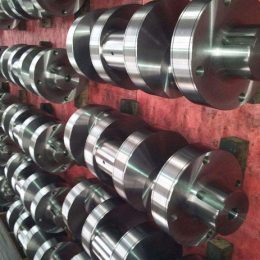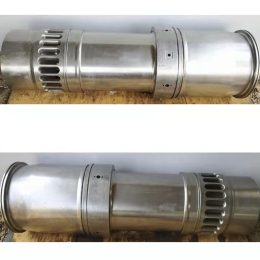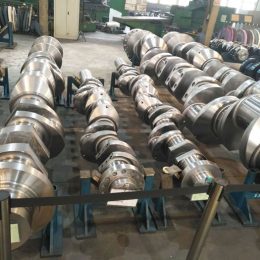Construction of Marine Diesel Engine Cylinder Cover

Introduction
The cylinder cover is an essential component of marine diesel engines, and it plays a crucial role in the performance and efficiency of the engine. This blog post will discuss the construction, function, maintenance, and common issues associated with the marine diesel engine cylinder cover.
Function of Marine Diesel Engine Cylinder Cover
The cylinder cover has several functions, including creating a combustion chamber, controlling the valves, and supporting the fuel injector. It seals the top of the cylinder, creating a combustion chamber where the fuel injector and the exhaust valve are located. The cylinder cover houses the valves, which control the intake of air and fuel and the exhaust of gases. It also supports the fuel injector, which is responsible for delivering fuel to the combustion chamber.
Maintenance of Marine Diesel Engine Cylinder Cover
Proper maintenance of the cylinder cover is vital to ensure optimal engine performance. Regular inspection, tightening of bolts, replacing gaskets, and cleaning the cylinder cover are crucial maintenance tips. Inspect the cylinder cover regularly for signs of wear and tear, cracks, or leaks. Ensure that the bolts holding the cylinder cover in place are tightened to the manufacturer’s specifications. Replace the cylinder cover gasket regularly to prevent gas leaks. Clean the cylinder cover regularly to remove dirt, oil, and other contaminants.
Common Issues with Marine Diesel Engine Cylinder Cover
Several issues can arise with the cylinder cover, including gas leakage, cracks, and warping. Gas leakage can occur if the cylinder cover gasket is damaged or worn out, resulting in reduced engine performance. Cracks can occur in the cylinder cover due to high pressure and temperature, leading to engine failure. Warping of the cylinder cover can occur due to excessive heat, causing the cover to lose its shape and compromising engine performance.
Causes of Cylinder Cover Cracking
Cylinder covers endure high levels of stress during operation due to thermal and pressure stresses caused by combustion. These stresses are added to the stress caused by initial head tensioning. The following factors may further increase these stresses: excess cylinder combustion pressures that increase the mechanical or pressure stress on the head, excess cylinder thermal stress caused by high cylinder temperatures, incorrect cylinder cooling, or insufficient cooling water treatment, and incorrect cylinder cover assembly, such as over-tensioning.
How to Prevent Cylinder Cover Cracking
Correct operation and maintenance of the engine can reduce the possibility of cracking by eliminating the above causes. Monitor cylinder combustion pressure using indicator cards or peak pressure readings. Closely monitor the temperature of the cylinder cooling to ensure that the temperatures are not excessive or too cold. Initial tensioning of the cylinder head should be carried out according to the recommended hydraulic tension or torque settings. Maintain the reserve of cooling water nitrates to reduce scaling or fouling of the cylinder cover’s heat transfer surfaces and to maintain the fatigue life of the covers.
FAQs
- What is the function of the marine diesel engine cylinder cover? The cylinder cover creates a combustion chamber, controls the valves, and supports the fuel injector.
- What is the cylinder cover made of? The cylinder cover is typically made of cast iron or steel.
- What are the common issues with the cylinder cover? The common issues include gas leakage, cracks, and warping.
- How can I maintain my marine diesel engine cylinder cover? You can maintain the cylinder cover by regularly inspecting it, tightening bolts, replacing gaskets, and cleaning it.
In conclusion, the cylinder cover is a critical component of marine diesel engines, and it needs to be maintained correctly to ensure optimal engine performance. Regular inspection, tightening of bolts, replacing gaskets, and cleaning the cylinder cover are crucial maintenance tips. By following the above tips, you can prevent common issues such as gas leakage, cracks, and warping, and extend the life of your engine.











